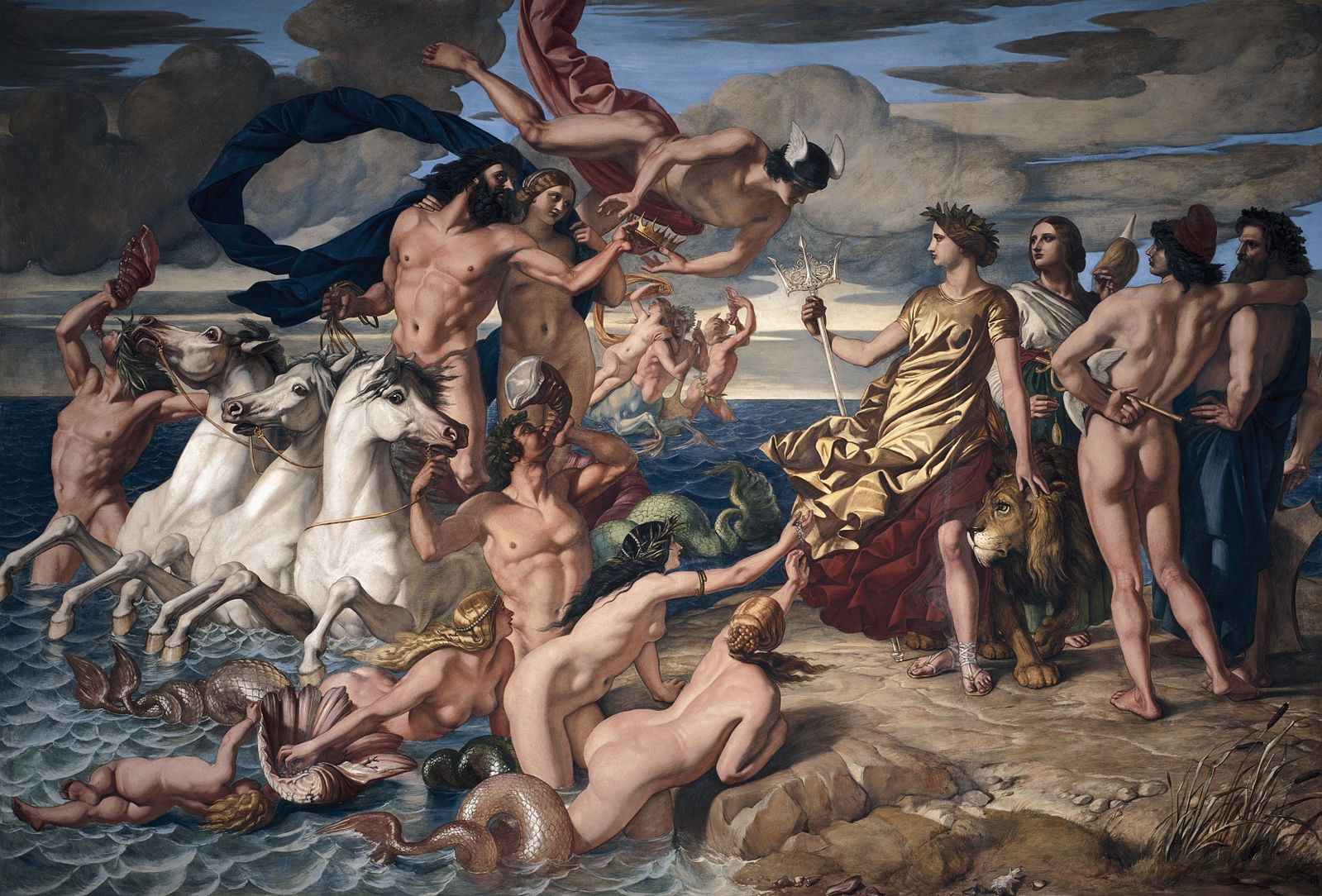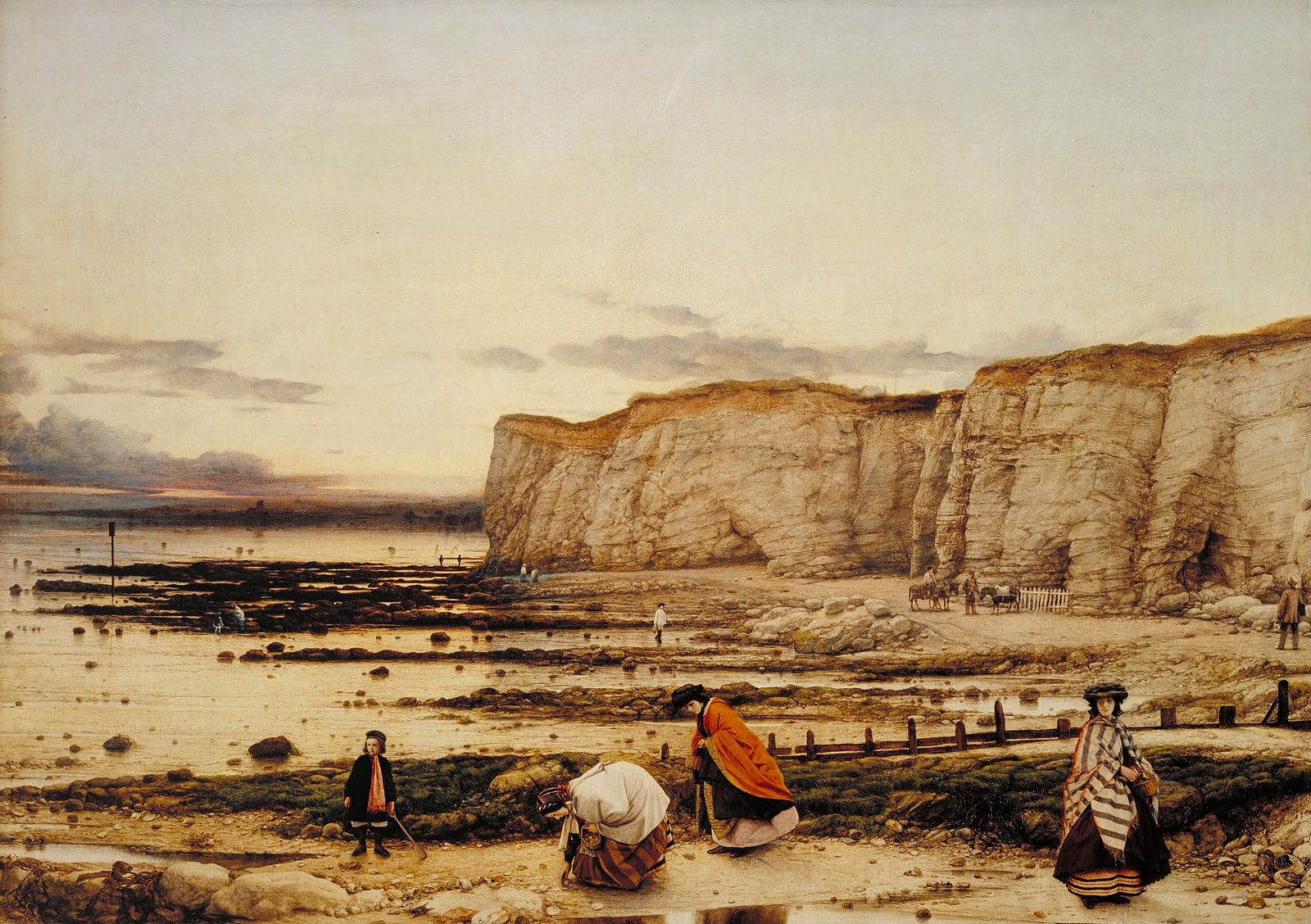William Dyce
1806-1864

The fresco of Neptune on the Grand Staircase at Osborne House. (Wikipedia)

Pegwell Bay, Kent – a Recollection of October 5th 1858 (Wikipedia)
William Dyce was an artist who was one of the first to be associated with the Pre-Raphelite style of painting. He was born in Aberdeen, studied at the Royal Scottish Academy and then at the Royal Academy of Arts in London. He worked for a while in Italy where he learned the technique of fresco painting before returning to England.
In 1843 Dyce was commissioned as one of a group of artists to paint a series of frescoes at the newly-completed Palace of Westminster. He chose the Arthurian legends as the subject of his work, a popular choice among the Pre-Raphelites.
Prince Albert was a great admirer of Italian frescoes and wanted to have works done at the summer house at Buckingham Palace and at Osborne. Dyce was called upon to paint ‘Neptune Resigning to Britannia the Empire of the Sea’ in 1847, on the walls of the grand staircase. The scene depicts Neptune and Mercury in the act of crowning Britannia as ruler of the seas, having already given her his trident.
Prince Albert purchased Dyce’s Madonna and Child from the Royal Academy for Buckingham Palace. The composition and style
He is probably best known for his highly detailed and realistic painting of Pegwell Bay in Kent, from 1859.
Downhill to next
Uphill to next
Funded by the
